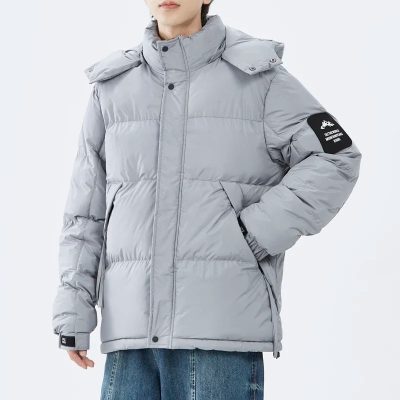Men’s puffer jackets are not just about style; they’re also a feat of engineering, designed to keep you warm and cozy in the coldest of conditions. From the materials used to the intricate construction techniques, there’s a lot of science behind what makes a puffer jacket effective. Let’s delve into the fascinating world of men’s puffer jackets and explore the science behind their materials, insulation, and construction.
1. Materials Matter: The outer shell of a puffer jacket is typically made from synthetic materials like nylon or polyester. These fabrics are lightweight, durable, and water-resistant, providing protection against wind and moisture. The choice of shell material is crucial for ensuring the jacket’s longevity and performance in harsh weather conditions.
2. Insulation Innovation: The hallmark of a puffer jacket lies in its insulation, which is responsible for trapping heat and keeping you warm. Two primary types of insulation are commonly used: down and synthetic. Down insulation, sourced from the soft under-feathers of ducks or geese, offers unparalleled warmth-to-weight ratio and compressibility. On the other hand, synthetic insulation, such as PrimaLoft or Thinsulate, mimics the properties of down but retains warmth even when wet. The choice between down and synthetic insulation depends on factors like climate, budget, and personal preference.
3. Loft and Fill Power: The loft of insulation, referring to its ability to trap air, is crucial for determining a puffer jacket’s warmth. Fill power measures the loftiness of down insulation, with higher fill power indicating greater warmth and compressibility. Manufacturers often use terms like “600-fill” or “800-fill” to denote the quality of down insulation used in a jacket. Understanding loft and fill power is essential for selecting a puffer jacket that meets your warmth requirements.
4. Baffling and Quilting: The distinctive quilted pattern of a puffer jacket serves a functional purpose beyond aesthetics. Baffles, or compartments, are stitched into the jacket to prevent the insulation from shifting and clumping, ensuring consistent warmth throughout. Additionally, the size and shape of baffles can impact a jacket’s thermal efficiency and overall aesthetic appeal.
5. Construction Techniques: The construction of a puffer jacket involves intricate stitching and sealing techniques to maximize warmth and durability. Features like welded seams, reinforced stitching, and adjustable hems enhance the jacket’s performance in cold weather conditions. Attention to detail in construction ensures that the jacket withstands the rigors of outdoor adventures while providing optimal comfort and insulation.
6. Innovative Technology: Advancements in textile technology have led to the development of innovative features in men’s puffer jackets. From moisture-wicking linings to breathable membranes, these technologies enhance the jacket’s functionality and comfort. Additionally, eco-friendly materials and sustainable manufacturing practices are increasingly being incorporated into the production of puffer jackets, aligning with the growing demand for environmentally conscious outerwear.
In conclusion, the science behind men’s puffer jackets encompasses a range of materials, insulation options, and construction techniques designed to optimize warmth, durability, and comfort. By understanding the intricacies of puffer jacket engineering, you can make informed choices when selecting the perfect jacket for your winter adventures.







